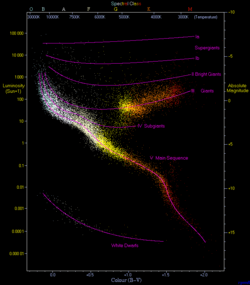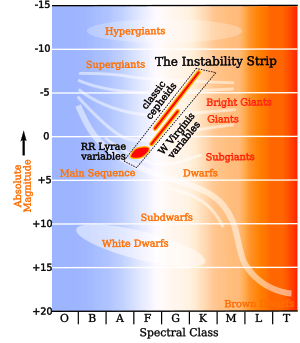Giant star facts for kids


A giant star is a star with much larger radius and luminosity than a main-sequence star of the same surface temperature.
Giant stars are up to a few hundred times the diameter of the Sun and between 10 and a few thousand times brighter than the Sun. They don't last as long as most main sequence stars. Stars still more luminous than giants are referred to as supergiants and hypergiants.
A hot, luminous main-sequence star may also be referred to as a giant.
There are a wide range of giant class stars, and sub-divisions are often used to identify particular types. Astronomers use such terms as: sub-giants, bright giants, red giants, yellow giants and blue giants.
Images for kids
-
Internal structure of a Sun-like star and a red giant. ESO image.
See also
 In Spanish: Estrella gigante para niños
In Spanish: Estrella gigante para niños


